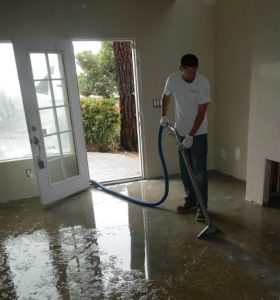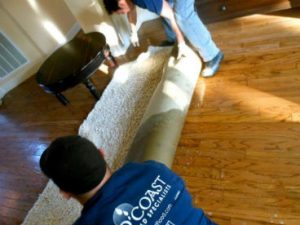Water Removal San Diego CA
 When a massive storm or flood hits your home, water can get into your home and cause a lot of damage. When this takes place, you’ll need a top-quality contractor to get that water extracted immediately. Stagnant water can cause a host of problems, all of which can be mitigated by having the best of the best get the water removed quickly and correctly. As your San Diego water damage restoration experts, we at Gold Coast Flood Restorations have the skills, expertise, and tools, to ensure that we’re the right contractor for the job
When a massive storm or flood hits your home, water can get into your home and cause a lot of damage. When this takes place, you’ll need a top-quality contractor to get that water extracted immediately. Stagnant water can cause a host of problems, all of which can be mitigated by having the best of the best get the water removed quickly and correctly. As your San Diego water damage restoration experts, we at Gold Coast Flood Restorations have the skills, expertise, and tools, to ensure that we’re the right contractor for the job
Experiencing a flood is a devastating incident. The caliber of the flood cleanup and restoration service you use can mean the difference between saving valuable possessions and losing them. All of our technicians truly care and will help you not only repair property damage but also help you salvage any possessions that may have been damaged in the flood.
Water damage can be a devastating experience for any homeowner or property owner. Whether it is due to a natural disaster or a burst pipe, water can quickly seep into the floors, walls, and ceilings of a building, causing extensive damage and posing serious health risks. In order to minimize the damage and restore the property to its pre-loss condition, water removal is an essential part of the flood restoration process.
Assess the Water Damage
The first step in any flood restoration process is to assess the extent of the damage. This involves identifying the source of the water, determining the affected areas, and evaluating the severity of the damage. Depending on the severity of the flooding, the restoration process can take anywhere from a few days to several weeks.
Once the extent of the damage has been assessed, the next step is to remove the water from the affected areas. This is often the most challenging and time-consuming part of the restoration process. There are several methods to remove the water that can be used, depending on the situation.
Methods Used to Remove Water
One of the most common methods of removing water is the use of pumps and vacuums. These tools are used to extract large amounts of water from the affected area and can be particularly effective for areas with standing water. Pumps and vacuums can be used in conjunction with other methods, such as dehumidifiers, to ensure that all of the moisture is removed from the affected area.
Another method of removing water is the use of dehumidifiers. Dehumidifiers are designed to remove moisture from the air, which can help to dry out the affected area more quickly. They can be particularly effective in areas with high humidity levels, such as basements or crawl spaces.
In addition to these methods, there are also specialized techniques that can be used to remove water. For example, infrared cameras can be used to identify areas of moisture that may be hidden from view, such as behind walls or under floors. Thermal imaging can also be used to detect areas of water damage that may not be visible to the naked eye.
Regardless of the method used, the key to the effective removal of water is to act quickly. The longer water is left standing, the more damage it can cause to the property. In addition to structural damage, standing water can also create a breeding ground for mold and bacteria, which can pose serious health risks.
Once the water has been removed, the next step in the flood restoration process is to dry out the affected area. This involves using air movers and dehumidifiers to circulate air and remove moisture from the air. Depending on the severity of the damage, this process can take several days to several weeks.
Our water removal services extract the majority of the water from your home or property. By carrying out a thorough water damage removal, the professionals at Gold Coast Flood Restorations reduce the drying time and help to prevent mold and additional water damage. They use powerful pumps and truck-mounted vacuum units to swiftly extract hundreds or thousands of gallons of water from your property.
Emergency Water Removal
Our highly trained water damage restoration will begin the water removal process promptly. The amount of water will determine the equipment used to carry out the extraction and drying process. Our technicians may use powerful submersible pumps in addition to industrial-strength, wet/dry vacuums. This step helps to reduce drying time and helps to prevent mold and secondary water damage.
Inspect the Carpet Pad and Carpet
 Gold Coast Flood Restoration specialists inspect the carpet and pad and determine if it should be removed to protect the subfloor.
Gold Coast Flood Restoration specialists inspect the carpet and pad and determine if it should be removed to protect the subfloor.
- Inspect Carpet Pad and Remove it if Needed
- Inspect Carpet and Remove If Needed
Water Removal Equipment
- Moisture detectors, hygrometers, and other meters measure the extent of moisture saturation.
- Infrared cameras may be used to find “hidden” water behind walls and ceilings.
- Submersible and gas-powered pumps are used for the continuous pumping of high-level water.
- Truck-mounted and portable extraction units perform efficient water removal.




Follow Us!